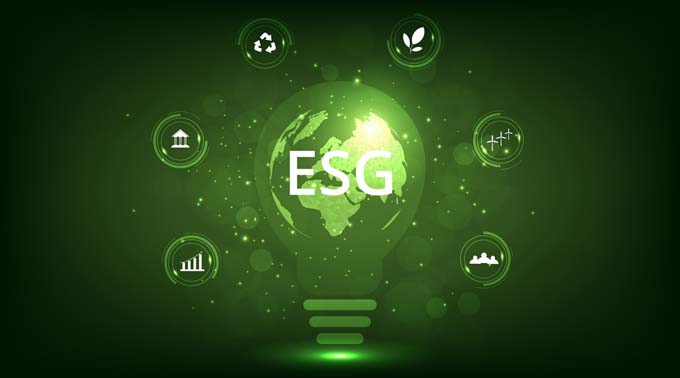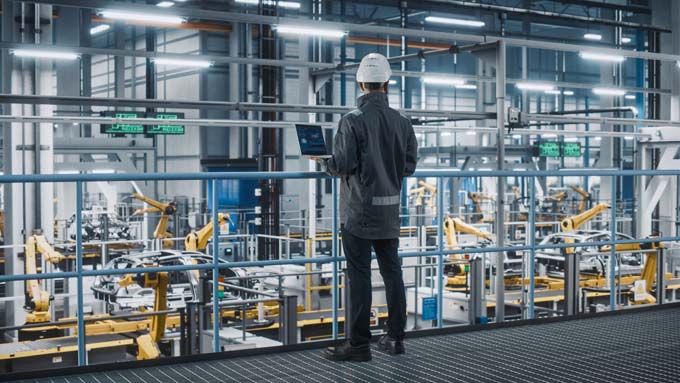The way to ESPRIX
All organizations strive for success. Some fail; some succeed temporarily and then go under. Only a few organizations are sustainably successful and achieve lasting excellence that meets or exceeds the expectations of all their stakeholders.

Dhe ESPRIX Foundation has set itself the goal of promoting the performance of organizations in business and administration in order to sustainably improve their national and international competitive strength on the basis of the European EFQM Excellence Model.
Motivation and challenge
The ESPRIX Swiss Award for Excellence is the most demanding and important national award for sustainable corporate success. The aim is to achieve above-average results for all stakeholders year after year, i.e. permanently, to survive as an organization in competition and thus to be sustainably successful in the market. In order to preserve entrepreneurial freedom today and also tomorrow, "top performance" is needed.
Basis of the competition
The European EFQM Excellence Model is the basis for the assessment and evaluation of the performance and competitive strength of the applicants for the ESPRIX Swiss Award for Excellence. It allows to determine the "entrepreneurial fitness" of organizations.
It has proven itself as a pragmatic thinking model for making organizations successful in the long term.
ESPRIX - Sustainable Fitness
make. Thanks to an open basic structure, it allows many approaches to achieve corporate excellence. The EFQM Excellence Model contains the most essential criteria for the comprehensive improvement of the performance and competitive strength of organisations.
Trilogy of success
In addition to the basic concepts of excellence, the EFQM Excellence Model contains two further elements as important success factors, the so-called RADAR logic and the criteria model.
RADAR logic demands that you also measure, check and learn from what you do. Because as a rule, being diligent alone is not enough if you want to tap into the third dimension of daily work, the dimension of improvement, of development.
The criteria model, which distinguishes between enablers and results, is nothing more than an amazingly simple representation of an "ideal" company, since it is all about leadership, about the
Orientation towards the ideal
Clarity of path, people, partnerships, resources, optimal organization of value creation and results.
These three elements are all interlinked, and so the EFQM Excellence Model is often presented as a combination of the eight basic concepts of excellence, the RADAR logic and the criteria model (Chart 1).
The goal is success
The sustainable development of an organization is one of the core tasks of top management. It can be summarized as follows:
- A unified and coherent leadership culture at all levels of the hierarchy, resulting in better collaboration and greater impact;
- Higher effectiveness and efficiency in process performance (management, service delivery and support levels), which translates into significantly lower costs throughout the organization;
- above-average results; this refers to employee, customer, company-related as well as performance and financial results;
- and that you know where and how you can steer, the knowledge of the success-relevant factors that you can influence.
An important prerequisite is that managers understand the cause-and-effect structure in the organization and that key performance indicators and results are identified for all stakeholders.
Against the background of this fact, the path of excellence is not a project, but a philosophy of corporate management and usually entails a paradigm shift of all managers involved.
Compare yourself with the best
The EFQM Excellence Model is an approach to ideal corporate management. The EFQM Excellence Model is an approach to ideal corporate management that focuses on the systematic improvement of competitive strength on the basis of strategy. By applying the model, management works with the factors relevant to success and is enabled to actively control and systematically improve its own competitive strength.
The way is the goal
Excellence cannot be bought, excellence is a path, because to be sustainably successful means to move successfully in one's environment for years, to search and find one's way to success again and again, i.e. to have the right strategies at one's disposal.
- The EFQM development programme for organisations distinguishes between different phases and draws attention to four important dimensions, namely:
- Network and share experiences in order to learn from each other, compare with others and share good practices, depending on the maturity of the organisation;
- Ensure empowerment of all managers and employees,
- Obtain orientation and assess the situation by means of regular self-assessment and external assessment on the basis of the EFQM Excellence Model, for example by means of self-assessment with a questionnaire or by means of external assessment through participation in the EFQM "Levels of Excellence" recognition programme (Figure 2 Box 1) and thus also
- Getting recognition on the path to excellence.
Corporate development according to the EFQM Excellence Model is not a guarantee for success, but it is the only method widely used today which
show progress
demonstrably leads to sustainable improvement in competitive strength and performance. The EFQM Excellence Model supports small, medium and large organisations to work sustainably in the present and thus successfully shape the future.









